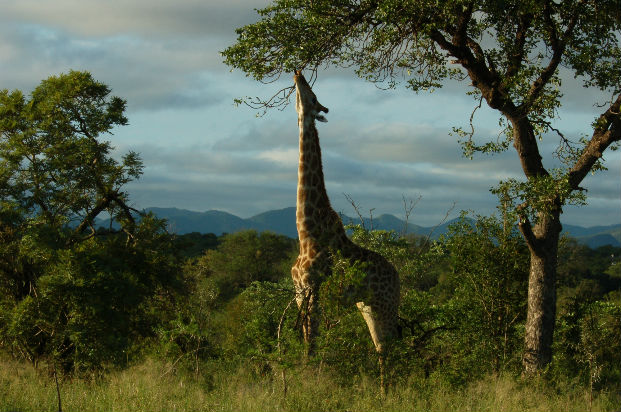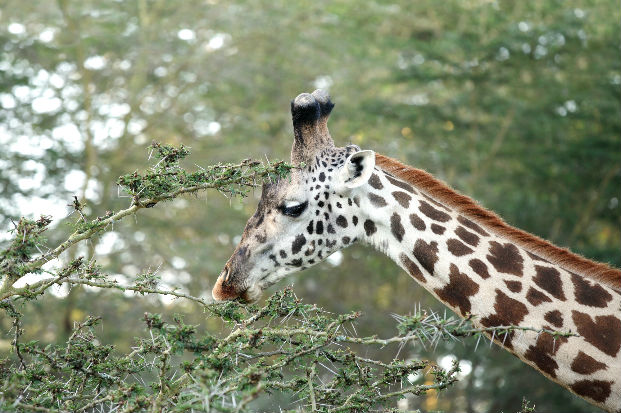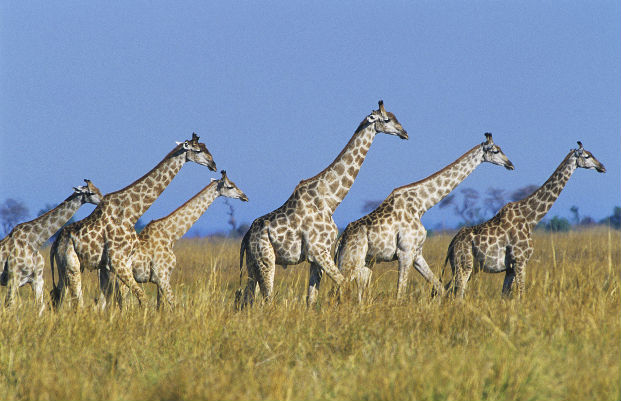The giraffe is an even-toed ungulate, as are cattle, camels, sheep, goats and hippos. Giraffe are the world’s tallest animals and are ruminants, i.e. animals that partly digest their food and then regurgitate it to chew as ‘cud’). They are predominantly browsers. Giraffe are currently widely recognised as one species and nine subspecies, based on a combination of distribution, coat pattern, morphology and some genetic data. However, there is increasing evidence to suggest that some of these subspecies may not in fact be different from others and in some cases may be species in their own right. Thus there may be fewer or more than nine and research is ongoing.
The various subspecies of giraffe currently occur in 21 countries in a wide arc across sub-Saharan Africa, from Niger to Central and East Africa and down to southern Africa. The Giraffe Conservation Foundation estimates that giraffe numbers have plummeted over the past 15 years from >140,000 in the late 1990s to <80,000 today. Their biggest threats are habitat loss, habitat fragmentation, human population growth and illegal hunting.
Vote for the fact you find most fascinating
To protect the giraffe’s brain from sudden changes in blood pressure when it lowers its head to drink, it has valves to stop the back-flow of blood and elastic-walled vessels that dilate and constrict to manage flow. NASA has done research on the blood vessels in giraffe legs to get inspiration for human space suits.
A giraffe’s neck is too short to reach the ground. As a result, it has to awkwardly spread its front legs or kneel to reach the ground for a drink of water. However, they only need to drink once every few days. Most of their water comes from all the plants they eat.
Female giraffe give birth standing up. Their young fall about 2m to the ground and can stand up within an hour of birth. Newborn giraffe are taller than most humans.
The giraffe is the tallest mammal in the world. It also has feet the size of a dinner plates with a diameter of 30cm and their tongue is between 45-50cm long.
A giraffe heart weighs approx. 11kg and is the biggest of any land mammal. It is used to pump 60 litres of blood around its body every minute at a blood pressure twice that of an average human.
Both male and female giraffe have ‘horns’ already at birth. These ossicones lie flat and are not attached to the skull to avoid injury at birth. They only fuse with the skull later in life.
Just like human fingerprints, no two giraffe have the same pattern.
Giraffe are already extinct in at least seven countries in Africa.







